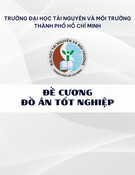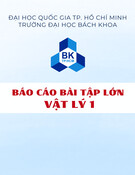
MINISTRY OF EDUCATION AND
TRAINING
VIETNAM ACADEMY
OF SCIENCE AND TECHNOLOGY
GRADUATE UNIVERSITY SCIENCE AND TECHNOLOGY
----------------------------
TRAN THI PHU
RESEARCH ON THE MACRO FUNGI
MYXOMYCOTA, ASCOMYCOTA, BASIDIOMYCOTA
IN NGOC LINH MOUNTAIN, QUANG NAM PROVINCE
Major: Botany
Code: 9.42.01.11
SUMMARY OF DOCTORAL THESIS
HANOI – 2018

The thesis is completed at: Graduate University of Science and Technology -
Vietnam Academy of Science and Technology
Supervisors: 1. Prof. Dr. Sc. TRINH TAM KIET
2. Assoc. Prof. Dr. NGUYEN KHAC KHOI
Reviewer 1:
Reviewer 2:
Reviewer 3:
The doctoral thesis will be defended at the Evaluation Committee of Graduate
University of Science and Technology, Vietnam Academy of Science and
Technology. Time: Date…. month …. 2018
This thesis can be found at:
- The library of Graduate University of Science and Technology;
- National Library of Vietnam

1
Introduction
1. Rationale
The kingdom fungi contains heterogeneous organisms, with over 100,000
described species (Kirk P.M, 2008), however, as expected Hawksworth (2001) the
number of fungal species can be up to 1,500,000 species. Fungi are very
meaningful in practice, many species make food: Volvariella, Auricularia,
Pleurotus; medicinal products: Ganoderma luc, Trametes versicolor, Cordyceps
etc applied in pharmaceutical technology. In science, many species (Lentinus
tigrinus, Schizophyllum commune) is the subject of studies on physiology,
biochemistry and genetics. Besides, there are many species of fungi that harm
plants and animals, some poisonous fungus cause coma and death for human.
Researches on macrofungi in Central Vietnam have been mentioned such as
Patouillard, N. (1923, 1928), Joly P. (1968), Ngo A. (2003), Dörfelt, H., Trinh
T.K, Berg, A. (2004) etc, However, fungus research is still limited, so collecting
and classifying fungus in the Central and Highlands has significant scientific and
practical significance.
In Ngoc Linh mountain, Quang Nam province, not has studied the macro
fungi. Therefore, "Research on the macro fungi Myxomycota, Ascomycota,
Basidiomycota in Ngoc Linh mountain, Quang Nam province" is a necessary to
identify and contribute to the protection of the diversity of species composition,
the rational use of resources, the protection of rare genetic resources for the
Vietnam mushroom complex.
2. The Objective of the dissertation
- Make a checklist of the macro fungi species;
- Evaluate diversity of species composition, resource value of macro fungi;
- Created a checklist for classification of indentified species of Myxomycota,
Ascomycota, Basidiomycota in Ngoc Linh mountain, Quang Nam province.
3. Scientific and practical significance
For the first time, the research provides a checklist of the macro fungi species,
evaluate of diversity of species composition, resource value of the macro fungi,

2
constructs identification key, and describes the new species of fungus recorded for
the genera and the valuable species macro fungi of the Myxomycota, Ascomycota,
Basidiomycota in Ngoc Linh mountain, Quang Nam province, Vietnam.
4. Layout of the dissertation
The dissertation consists of 150 pages, 65 images, and 12 tables.
Introduction (2 pages), Chapter 1: Literature review (16 pages), Chapter 2:
Object, content, research methods and natural, social conditions in Ngoc Linh
mountain, Quang Nam province (13 pages), Chapter 3: Results and discussion
(106 pages), Conclusions and recommendations (3 pages), References (9 pages),
List of author’s publications.
Chapter 1. Literature review
1.1. Some main mushroom systems
Mushroom systems of Gaümann (1964); Kreisel (1969); Ainsworth, Bisby
(1971); Kirk P.M. “Dictionary of the fungi” (2008); Trinh T.K. (2014) “Check-list
macro fungi in Viet Nam”
1.2. Macro fungi research in Myxomycota, Ascomycota, Basidiomycota in
the world
Before the XIX century, in the world Théophraste and Aristote studied
Tuberaceae and Agaricaceae. Linnaeus with “Species plantarum”, some species of
fungus have been mentioned. De Bary A., (1887) in London “Comparative
morphology and biology of the fungi, Mycetozoa and Bacteria”, compared the
characteristics of fungi, animals and bacteria.
The XX century, in New Zealand, Cunningham G.H., (1965) announced 550
species the Polypore. Corner E.J.H., research “Ad Polyporaceas II, III, IV”
described of morphology, key to species of the Polypocre. Donk M.A., (1967)
described, identificated key to species of the Polypocre in Europe. In 1970, Teng
S.C., described 2400 species, 601 genera, 5 classes. Rolf Singer, (1986) with “The
Agaricales in modern taxonomy”, described morphology, structure and spore the
230 genera, 17 families, the Agaricales. Zhao Ji-Ding, (1989) in “The
Ganodermataceae in China”, described hyphae, spores and identification key to

3
Ganoderma with 64 species, Amauroderma with 20 species, Haddowia and
Humphreya with 2 species. The theme "Pilze der Schweiz" for 25 years of
Breitenbach. J. and Kraenzlin F. generalized the Ascomycota and Basidiomycota
of Switzerland.
The XXI century: Mao Xiaolan (2000) published “The Macro fungi in China”,
described morphology, structure hyphae, spores. Heikki K. described and
identificated key to 139 the Polypore in Russia. Zmitrovich I.V (2012), found
identification key to 63 species, genera Trametes. Dörfelt, Heinrich, (2014) with
“Morphologie der Großpilze” described morphology macro fungi: surface,
hymenophore, skeletal hyphe, hyphe, spores, hole, the stratification of the tube
etc. In Brazil Gomes-Silva A.C. (2015), analysed morphology and molecular of 20
species, the genera Amauroderma, 6 new species for science. In 2017, Ginns J.
with “Polypores of British Columbia” described the morphological characteristics
of 200 species the polypore: surface, hyphe, hymenophore, spores etc and
construct identification key.
1.3. Macro fungi research in Myxomycota, Ascomycota, Basidiomycota in
Vietnam
Macro fungi research in Vietnam: Patouillard N.M. with 3 volumes of
mushroom publications 1876-1924, described 235 species have been recognized
44 species for Vietnam. Joly P. (1968), in Lang-Bian, described 20 species, genus,
Xylaria. In 1986, Parmasto E. summarized 310 species in the "Preliminary
Catalog of Fungi Aphyllophorales and Polyporaeae s.str. Vietnam".
Research on mushrooms in the North with typical works: Trinh T.K. (1981)
published "Macro fungi of Viet Nam", describing 116 species. In 1991, Phan H.D
announced 56 species. A checklist 837 species of macrofungi of Vietnam
“Preliminary checklist of macrofungi of Vietnam” by Trinh T.K. in 1996. Trinh
T.K and Trinh T.B. (2008) identified checklist 210 species of medicinal fungus.
In the Central region, Ngo A. (2003) identified in Hue 4 classes, 28 orders, 55
families, 134 genera, 346 species, new record: 1 family the Gomphidiaceae, 7
genera, 39 species. Ngo A., and Nguyen T.K.C., (2013) identified 162 species, 63

![Tiểu luận Cơ sở Hóa sinh: Bài luận [Mới nhất]](https://cdn.tailieu.vn/images/document/thumbnail/2025/20250710/hoangmaiphuong_t66@hus.edu.vn/135x160/622_bai-tieu-luan-co-so-hoa-sinh.jpg)
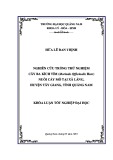
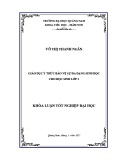

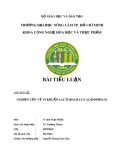
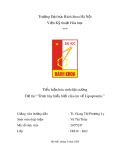
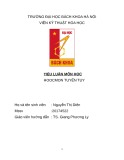
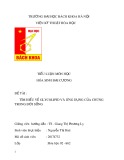
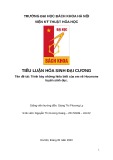
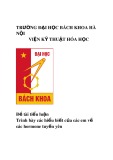
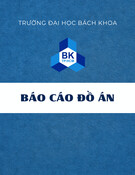
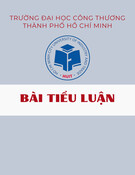
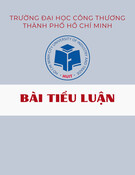
![Ô nhiễm môi trường không khí: Bài tiểu luận [Nổi bật/Chi tiết/Phân tích]](https://cdn.tailieu.vn/images/document/thumbnail/2025/20251011/kimphuong1001/135x160/76241760173495.jpg)
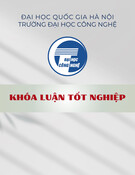
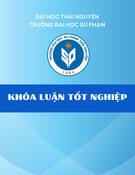
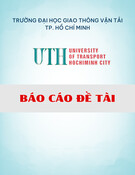



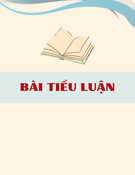
![Ứng dụng kỹ thuật trao đổi ion trong điện phân: Bài tiểu luận [chuẩn nhất]](https://cdn.tailieu.vn/images/document/thumbnail/2025/20250829/sonphamxuan1808/135x160/97341756442892.jpg)
